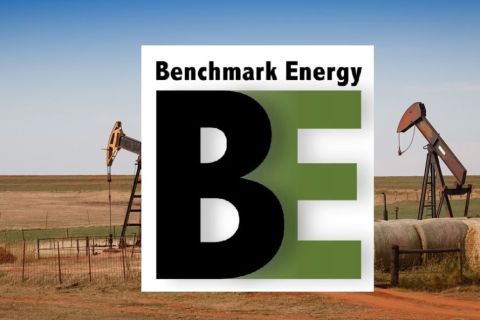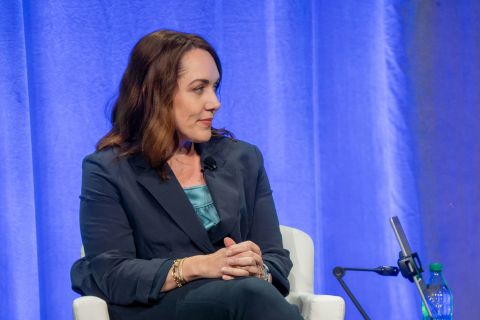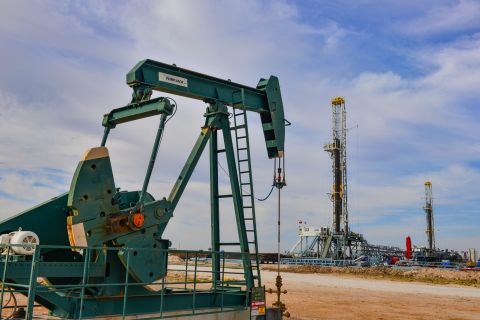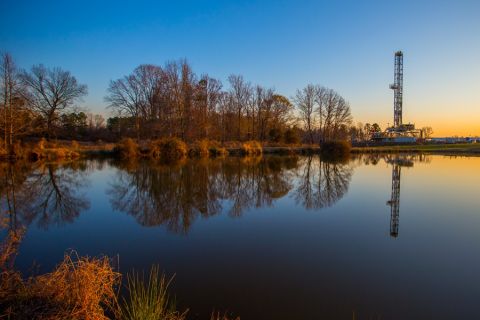In case you haven't noticed, there's been a shift on Wall Street. Investors traditionally favored exploration and production companies boasting long-lived oil and gas reserves and steady reserve growth. Later, investors decided cash flow was key, so companies pulled out all the stops to produce their wells as fast as possible. Today, investors have shifted again; their mantra is return, return, return. Yet, a recent study showed that during the last five years, only one E&P stock outperformed the Standard & Poor's 500. The U.S. Energy Information Administration says that from 1987 to 1996 (latest data available), the average nominal return for the top 24 U.S. producers was a mere 5.7%, while their average cost of capital was 12%. Clearly, something has to change if E&P companies expect to recapture investors' attention. Majors and independents alike have heeded the call. They are high-grading their opportunity portfolios, divesting formerly well-loved assets, and hoping to bolster returns. Examples of this new focus abound. In reporting 1999 results, and crowing about Texaco's recent 1-billion-barrel find off Nigeria, chairman and chief executive Peter Bijur noted the company's "strategic shift from multiple incremental projects to select high margin, high impact projects." EOG Resources' CEO Mark Papa mentioned that the company's target drilling return is now 15%, with a focus on return on capital. Analyst David Bradshaw of Donaldson, Lufkin & Jenrette visited with Burlington Resources and came away reporting that the company "is pursuing a more rate-of-return-oriented program that prioritizes spending in a more methodical fashion." Cabot Oil & Gas Corp. is on the return bandwagon too. When chairman and CEO Ray Seegmiller learned last year that some of the wells the company had drilled were a technical success-yet had created little or no real return-he became alarmed. Part of the problem, he realized, was that the exploration and development staff at Cabot, as at many other E&P companies, was compensated on drilling success rates, not economic return. No wonder Cabot spent money on some wells that it should not have, he told Oil and Gas Investor candidly. Different decisions were needed-and maybe, a new way of making them. In response, Seegmiller has reduced Cabot's dependence on its long-lived, but low-margin, Appalachian assets, and he's allocating more of the drilling and acquisition budgets to higher-return Gulf Coast and Rocky Mountain plays. And last year, he asked a consultant from the Colorado School of Mines to help him implement a risk assessment and portfolio management program to optimize the company's risk-reward. With a large exploration and development inventory, he felt it was necessary to improve the planning process, to maximize the value associated with the drilling expenditures. Although still revising Cabot's decision-making process, Seegmiller says the firm has made progress: after-tax drilling rates of return rose from 12% in 1998 to 56% in 1999. Not all of that was due to higher oil or gas prices; some improvement came from the change in strategy. It seems obvious to say that better decisions should yield better returns. But that is easier said than done. If a company has $100 million to spend and a portfolio of 65 projects, and management seeks a net present value of $200 million, which combination among the 65 choices will yield the desired result-and do so without trashing the balance sheet or overstepping the board of directors' risk-reward comfort zone? At the individual well level and across the full corporate portfolio, managers are demanding to know: exactly what do we have here and what is it worth, how much did it really cost us, and what shall we do with it next? Fortunately, a new generation of software tools is available that combines the technical and the financial. The mutual fund and pharmaceutical industries already use these tools to help decision-makers input corporate parameters such as desired rates of return, finding cost hurdles, costs of capital limits and other factors. Voila: if drilling a well, producing a field or acquiring an asset cannot meet corporate goals, managers know it in minutes and can act upon this information accordingly. This need for better decision-making dovetails nicely with another trend-that of oilfield service and software companies racing in the late 1990s to integrate technical (geoscientific) and business (economics and risk analysis) software into a seamless whole. "A key strategic objective in the 1990s was the race to provide an integrated suite of [technical] data. But our teams realized an element was missing: how do you translate the physical data of an asset into dollars?" explains Thierry Pilenko, president of GeoQuest, a business of Schlumberger. Last summer, within a week of one another, the two oilfield service giants Halliburton and Schlumberger took their dream of software integration a step closer to reality. Halliburton's Landmark Graphics and Schlumberger's GeoQuest acquired software companies that focus on economic evaluation, risk analysis, portfolio management-in short, factors that improve decision-making. These are being integrated with the technical software already in place. Landmark acquired Economic Analysis Systems, Houston, and its TERAS software program. EAS fits the overall strategy of integrating technical and business processes, said Landmark CEO Robert Peebler at the time. In the late 1980s and 1990s, he pointed out, gains in industry productivity were driven by new technologies such as 3-D seismic, and integrating interdisciplinary scientific data that resides in an E&P company. Today, the focus is on ramping productivity up another notch by integrating those technologies with business processes. And, GeoQuest acquired Calgary-based Merak, a petroleum software company founded in 1980, serving 600 companies in 30 countries. It makes the widely used PEEP (Petroleum Economic Evaluation Program), as well as Decision Tree, Capital Planning and Portfolio, among other software programs. Says Pilenko: "It was clear that we had to link the technical descriptions to the dollars. Our customers told us they had the data to describe their asset, whether it was in South Texas or the North Sea, but now, they needed a way to evaluate the asset, to guide their investment patterns. Data management is the fastest growing segment of GeoQuest, and Merak added certain needed technology to that, with no overlap." When geologists and engineers form collaborative asset teams that use integrated technical software and data from various disciplines, productivity should go up. The new software enables them to take that plethora of technical data to the next step, to be used alongside economics, risk analysis and portfolio management generally. Users of Landmark's TERAS, which include Unocal and Anadarko Petroleum, can analyze the characteristics of any asset or assets, and the drivers behind them, then model risk and uncertainty within a company's portfolio. TERAS looks at the inherent uncertainties associated with production, prices and other factors that affect economic performance. "You have to capture the uncertainties at the source to improve the overall analysis," explains Lee Hightower, who founded EAS in 1995. Previously he was a planner and asset management analyst at Unocal for 12 years. This software captures geological, geophysical and engineering data from many disciplines and combines these with financial, economic and political factors, risk analysis and portfolio modeling. Users can easily update or optimize their portfolio following a commodity price change, a hydrocarbon discovery, an asset sale or an acquisition that has "rebalanced" the portfolio of choices and risks. TERAS is used for planning and budgeting, to optimize drilling, or to select the right projects that meet specific goals. "This is helping customers move from high risk to medium risk and yet, get the same net present value," says Jonathan Lewis, vice president of information and business systems for Landmark. "The last major discontinuity or major step change in the industry was 3-D. We think this is the next one. But no company will ever abandon its decision making, even though it may outsource acquisition of data, drilling or whatever. I would contend that we 'over-science' many of our reservoirs and spend enormous sums. It would be better to build multiple models that show the range of outcomes and the likelihood of making or losing money." The goal is for senior managers to understand the parameters and drivers, and all the relevant data and options before they make their final decision. "Previously, geoscientists and engineers would spend man years to evaluate an opportunity, and then they'd pass their conclusions on to someone who spent less than a day to work up the economics of the project," Hightower says. "I remember long computer printouts that ran the full length of the hallway. We'd be down on our knees with a pencil and a ruler. Then it went to management, which is so far removed from the prospect, and had even less time to make a decision. TERAS helps provide for a better quality of analysis." At the 1999 SPE Hydrocarbon Economics and Evaluation Symposium in Dallas, a spokesman for Mobil Exploration & Producing U.S. (MEPUS) said the company's vision at that time was to be the best in class in any given region, or exit it altogether. Some 165 employees began using TERAS on their PCs to evaluate and manage the portfolio of 150 oil and gas fields. They were able to combine "old data" (accounting and production data) and "forward data" (commodity price projections, inflation and cash flow calculations, contingencies and risks) with any number of iterations. They compared their midyear results with the initial plan. Three out of four users, when polled a year later, said TERAS improved their economic knowledge and 70% said it had improved their asset management process. Merak claims to achieve similar success. Although now a part of GeoQuest, Merak will keep its research and development team intact in Calgary. Vice president Stuart O'Connor says the parent is leaving "the Merakians" alone to preserve their corporate culture and develop software at their usual pace. Both Shell E&P and Burlington Resources have adopted Merak's tools. As part of its effort begun in 1995 to redesign business processes and decision-making, Burlington wanted faster and easier access to the wealth of data confined within its walls, and a way to integrate reserves and economic data. The company cited studies that indicate most engineers and geologists spend 80% of their time researching files, querying databases and collecting and reformatting data-and only 20% of the time doing what they were trained and hired to do, which is make decisions that lead to finding oil and gas. Says Pilenko: "You need a strong interaction between the technical and the economic. Somebody somewhere in the value chain, from seismic to production, has to run the scenarios. "This trend really accompanies the fact that many of the technical competencies can be outsourced now and are becoming commodities. What really matters is the ability to quickly decide which of your assets can be kept and which divested. The faster you decide and act, the more competitive and profitable you can be. Now the geophysicist knows more about the economic consequences of a decision." The next goal for EAS and Merak? Providing some of their software through the internet, so users can "plug and play" from anywhere in the world. Despite the promise and potential benefits of these new software packages, there are industry skeptics who prefer to rely on management which is, after all, paid to make the big decisions. "I lived through the computerization of decision-making at a major and it was frightening," says an engineer who asked not to be identified. "The quality of inputs means more than dazzling outputs. Will we end up with a generation that can use these tools, but that lacks sound judgment? These tools are wonderful; I'm not dismissing them. But someone has to know what is critical and what is not." "Just because you can do 5,000 iterations doesn't mean you have a better answer," says Andy Fair of Randall & Dewey Inc. The Houston acquisition and divestment advisory firm uses Aries software, which was acquired by Landmark Graphics, as part of its evaluation of reserves to be bought or sold. It also evaluates whether a client's existing asset base can be used to achieve corporate goals, or must be adjusted by buying and selling. Still, these software programs allow a company to better understand the value of its assets, and figure out which decisions can change that value. Says Merak's O'Connor: "Because the oil companies are coming under a tough microscope from the investment community, we think this will become more germaine as time goes on."
Recommended Reading
EIA: Permian, Bakken Associated Gas Growth Pressures NatGas Producers
2024-04-18 - Near-record associated gas volumes from U.S. oil basins continue to put pressure on dry gas producers, which are curtailing output and cutting rigs.
Benchmark Closes Anadarko Deal, Hunts for More M&A
2024-04-17 - Benchmark Energy II closed a $145 million acquisition of western Anadarko Basin assets—and the company is hunting for more low-decline, mature assets to acquire.
‘Monster’ Gas: Aethon’s 16,000-foot Dive in Haynesville West
2024-04-09 - Aethon Energy’s COO described challenges in the far western Haynesville stepout, while other operators opened their books on the latest in the legacy Haynesville at Hart Energy’s DUG GAS+ Conference and Expo in Shreveport, Louisiana.
Mighty Midland Still Beckons Dealmakers
2024-04-05 - The Midland Basin is the center of U.S. oil drilling activity. But only those with the biggest balance sheets can afford to buy in the basin's core, following a historic consolidation trend.
Mesa III Reloads in Haynesville with Mineral, Royalty Acquisition
2024-04-03 - After Mesa II sold its Haynesville Shale portfolio to Franco-Nevada for $125 million late last year, Mesa Royalties III is jumping back into Louisiana and East Texas, as well as the Permian Basin.





